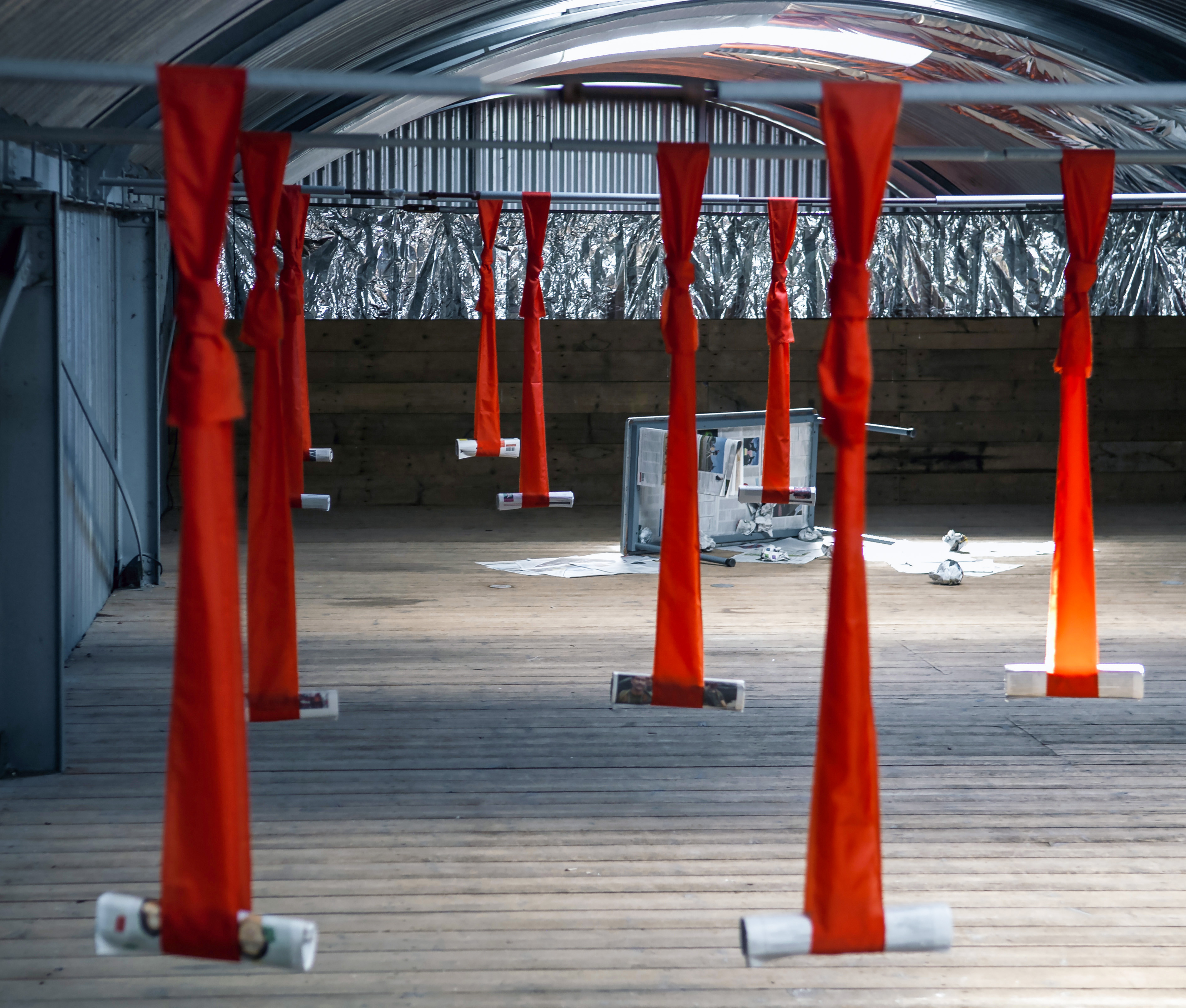
| Installation LEBENSRAUM |
|---|
 |
|
|
| Installation
Lebensraum is part of project SWEEP which runs from 2013 through
2015. The project philosophically and artistically investigates the
relationship between the notions of guilt, shame, good and evil, and
what each of them turns into the other. In my everyday life, all sorts of testimonies of guilt surround me due to the fact that I live in the midst of what used to be the Jewish neighbourhood of Amsterdam. Most of the Jewish people who lived here did not return from the concentration camps. Instead, museums and institutions continue to testify to this tragedy in exhibitions, demanding that we remember the horrors that took place. Do these testimonies help us reach a better and more tolerant understanding of each other? The term Lebensraum is some 3000 years old, but we know it as the term the Nazis used as a justification for expansion during the First and the Second World War. Following the Britons and the French in their search for space to secure their 'pure Aryan race. Italy was familiar with a similar concept 'spazio vitale', not based on genocide, but on the export of the fascistic revolution and an Italian superior civilisation in the conquered territories. Mussolini had the whole Mediterranean region in mind, 'Mare Nostrum', as well as North Africa from the Atlantic- to the Indian Ocean. Even nowadays the concept has not disappeared from our worldview. China, for example, has been accused of Lebensraum-politics with respect to the Tibetans. And also Israel has been blamed for applying the idea as justification for the Jewish settlements. Maybe it is about time to give a different weight to the notion of Lebensraum. In the sense of creating space for feelings of guilt and shame by transforming them into self-knowledge. To resolve this, we do not need to chase away people from their habitats, rather, it might be more rewarding to visualise the demons in ourselves. Laying them in front of us, allowing ourselves to look at them from some distance, and start |
again with a
more constructive attitude. The fort near Vijfhuizen is situated
between Haarlem and Hoofddorp. It was one of the first
fortifications of the Defence Line of Amsterdam which was built in
concrete between 1880 and 1920 in order to defend the city of
Amsterdam. The fortress still has a beautifully restored iron
military shed from 1896.which was used for the storage of artillery.
The Defence Line of Amsterdam was never actually used. By the time
the enemy arrived, they came by plane and not necessarily over land
or water. In March 2000 the Foundation Kunstfort Vijfhuizen took the
initiative to transform the fortress into a center for contemporary
art. The installation was set up at the top floor of the military shed of the Kunstfort near Vijfhuizen. Physically and visually the place is cut of by six tie rods. I used the rhythm of the rods as a visual tool by attaching red bands of fabric with folded newspapers. Hanging from the rods in tie-knots, the ribbons suggest the man in the street; the man with his newspaper, i.e., his everyday knowledge. In the back of the shed, only partly visible between the rows of tie--knot--bands, there is a writing desk, topped over and covered with lumps made of newspaper. The top floor did not cover the entire surface of the military shed, but was at some point topped of with a wooden wall at man's height. I covered the gap between wall and ceiling with emergency blankets, normally used for people who suffer from hypothermia. Towards the opposite front side of the military shed, a red rug of shame showed the red objects that were delivered by the public. These objects were spread on newspapers as the extension of red transparent photo prints which were themselves mounted on newspaper. The newspaper expressed our everyday world with all that is the case; our everyday knowledge. A red tube closed off this rug, suggesting that the shame continues, has not (jet) been fully unwinded, uncovered or ended; maybe even should not ... |
|
|
| 12.10 - 5.12 2014 |
Installation Lebensraum. Fabric, writing desk, photo-prints,
newspapers, emergency blankets, and red objects, Kunstfort near
Vijfhuizen (NL) (solo) Dimensions 728.3 x 303.1 x 149.6in / 1850 x 770 x 380cm. |
|
|